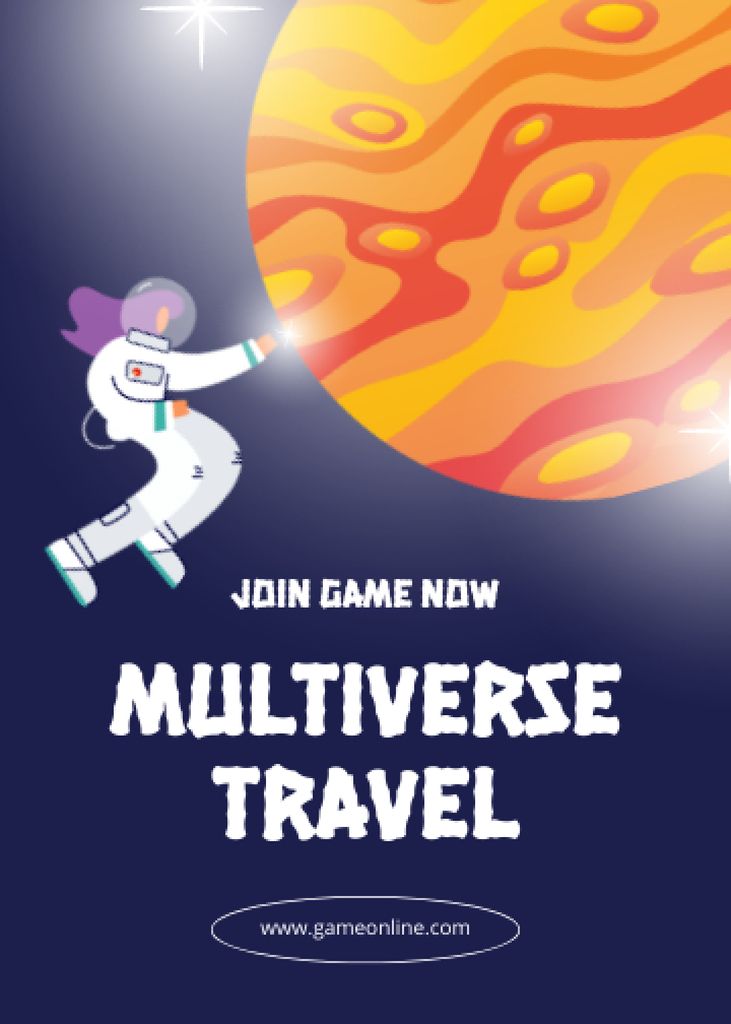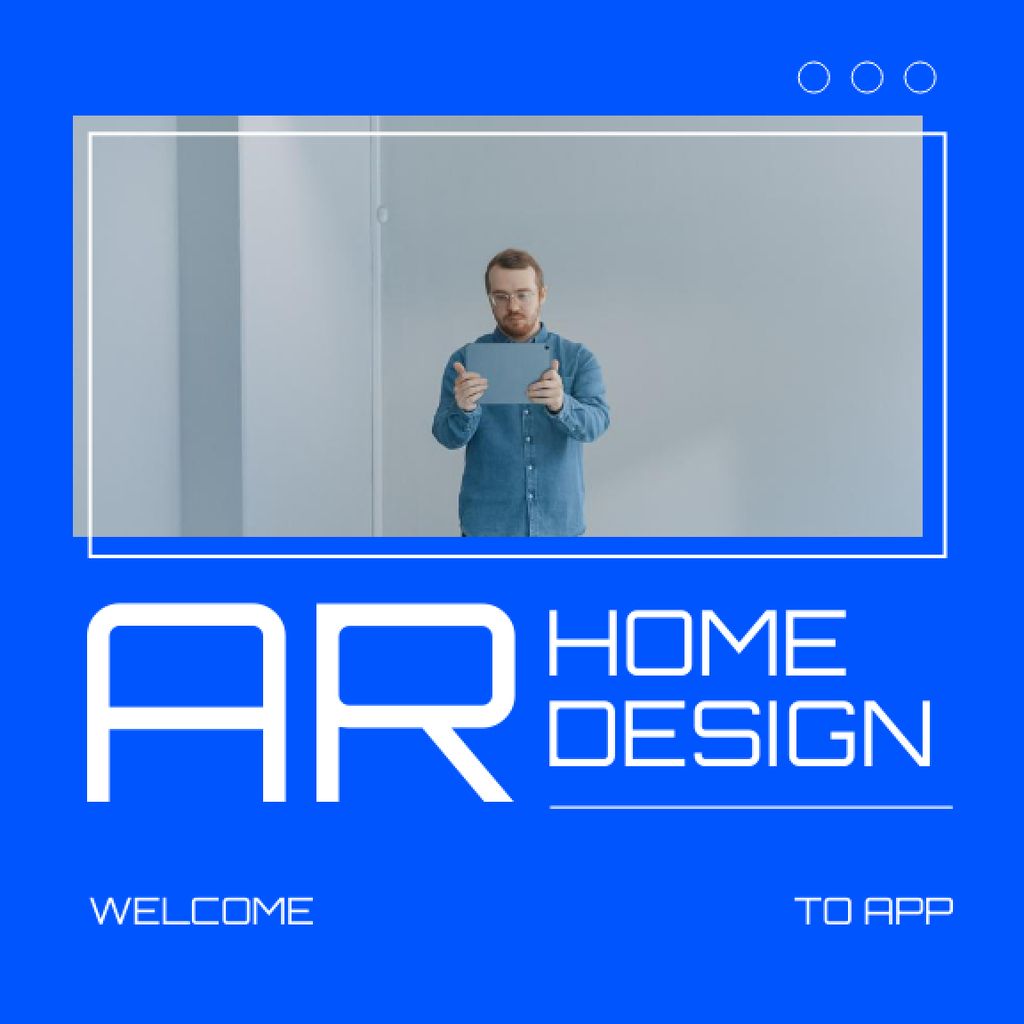Augmented Reality and marketing: How and why to use AR marketing
Throwback to summer 2016. Does this ring a bell?
To quote the classics, ‘the vibes were immaculate’. Rihanna was releasing music (oh, to listen to Anti for the first time again!), abortions were still legal in the USA, and Kylie Jenner was in her King Kylie era making us all take selfies exclusively with the Snapchat dog and flower crown filters on. We were unaware of the coronavirus and lockdowns; quite the opposite — we were outside all day trying to catch Pokemons. And, well, we weren’t on the brink of literal world war three.
Yeah, summer 2016 deserves all the hype it gets.
Fast-forward six years, and we’re still going crazy over some of the concepts of this recent past. One of them is Augmented Reality.
Regardless of whether you were aware of this back in the day or not, both Snapchat filters and Pokemon Go introduced the majority of us to AR technology, giving it a kickstart into the future. Today, after the world has accelerated its transition into the digital realm (the Metaverse is hot these days!), AR is as popular as ever before. It stopped being nice-to-have and turned into a digital marketing and sales must-have tool.
Make sure you read this article carefully to learn everything you need to know about Augmented Reality and how your business can benefit from implementing it; including what AR is, why you need it, and how to make use of it. Of course, with plenty of examples from cutting-edge, fashion-forward businesses.
What is Augmented Reality (AR)?
Unless you’re a certified nerd that gets excited over sci-fi and cutting-edge technology (we are, no shame!), the phrase Augmented Reality might interest you. It sounds like something from a Doctor Who episode: futuristic, complicated, and straight-up techy.
But really, it’s much simpler than you might think, especially considering that AR is already a huge part of our everyday lives. Some of the most common, trivial Augmented Reality examples would be weather channel studio effects, Instagram Filters, and games like Pokemon Go.
Long story short, Augmented Reality is a technology that superimposes a computer-generated virtual enhancement on a user’s view of the real world — both objects and experiences, — mostly through visual (images and graphics) and auditory (sounds) sensory modalities. It’s “an environment that includes both virtual reality and real-world elements.”
That’s it. That’s the definition of the term. But if you want a more scientific one to get the full picture, here’s how Ronald Azuma, a computer scientist and author of the most cited work in the AR field, defined Augmented Reality back in 1997.
According to him…
Augmented Reality is a system that meets the following criteria:
1. it combines the real and virtual;
2. it is interactive in real-time; and
3. it is registered in three dimensions.
Yeah, now we’re talking.
But in order to understand what AR is and what it isn’t, let’s unleash our nerdy side for once and find out how AR technology works and how it is different from VR.
There are 4 main types of Augmented Reality:
- Marker-Based Augmented Reality. A 2D marker (a QR code, a bar code, or a watermark) that results in AR experiences when a device’s camera points at it.
- Marker-less Augmented Reality. Doesn’t need a marker to trigger an AR experience and uses the data from the device’s GPS to predict where the user is focusing.
- Projection Augmented Reality. Uses light, projectors, and projection mapping techniques to overlay Augmented Reality content directly over real-life objects.
- Superimposition Based Augmented Reality. One of the most complex types of AR that is based on object recognition; it replaces the original image either partially or fully.
The last type of AR is the most similar to VR. But they’re still not the same thing.
The main difference between the two technologies is that AR augments your surroundings by adding digital elements to a live view, while Virtual reality replaces a real-life environment with a simulated one, creating a completely immersive experience.
(Source)
The benefits of using AR in marketing
Without a doubt, even when simplified, AR sounds like a pretty advanced technology that can take up a lot of time and effort when incorporated into your marketing strategy. So, why are so many companies turning to Augmented Technology in their marketing activities?
The answer to this question is straightforward: there are plenty of benefits that AR can bring your business. Just to name a few…
- It helps to increase brand awareness. When using AR in your marketing activities, you cultivate a “wow” factor, getting both your target audience and media to talk about your marketing campaign and, therefore, your brand. Even though AR is no longer a novel experience for the majority of customers, it still can startle and surprise.
- It helps to improve customer experience. Using AR in your marketing campaigns can shorten the sales cycle and offer your potential clients more information about the product in an unobtrusive way.
- It helps to increase conversion rates. Better customer experience makes it easier for customers to commit to the product and make a buying decision without much hesitation: they have all the extra information about products at their disposal. Besides, AR technology provides brands with an opportunity to package the CTA message into an interactive experience that’s almost impossible to escape. In fact, according to Shopify, AR ads outperform traditional display ads, generating 94% higher conversion rates compared to ads without AR/3D components.
- It offers increased user engagement. Ad blockers are one of the biggest challenges for programmatic advertising. And even if members of your target audiences aren’t actively fighting digital ads, it’s likely that they still don’t get affected by them. In fact, according to the information from Mobile Marketer, over 50% of Internet users say they never click on banner ads, finding them disruptive and intrusive. These days, you’re unlikely to get through to your potential clients with something trivial. On the other hand, research from Deloitte Digital and Snap Inc’s report suggests that around 65% of consumers use AR to have fun. Indeed, AR experiences are significantly more fun and engaging than static 2D or even 3D images traditionally used in marketing campaigns. They are more interactive and let customers learn more about the product while absorbing their undivided attention.
- It helps to build a stronger emotional connection with customers. Research studies reveal that memory encoding is 70% higher with AR experiences than with regular 2D ads. This means that AR ads can create a strong positive association with your brand and potentially turn it into a love mark. The reason for this is that AR marketing campaigns focus on evoking positive emotions and gifting experiences.
- It helps to reach a younger audience. There’s a reason why media often refers to Gen Z as Generation AR — they’re the audience whose lives are most affected by Augmented Reality technology. Hence, they’re most familiar with it and more likely to seek it in brands they choose. If you want to target younger audiences with your marketing campaign, AR marketing is a must!
- It helps to increase sales. All in all, the aforementioned benefits of AR marketing inevitably lead to an increase in sales: when Deloitte and Snap Inc. conducted their research, they found out that brands offering custom AR experiences were 41% more likely to be considered by customers. Moreover, almost 75% of consumers admitted they would pay more for a product they could explore with AR.
If you’re still not convinced about the importance of adopting AR marketing tomorrow, even after the aforementioned hefty list of AR marketing’s benefits, we’re about to uppercut you with several retail-related AR stats.
- 72% of shoppers that used AR in their shopping journey said they purchased stuff they didn’t plan to buy, simply because of the experience of using AR.
- 29% of surveyed consumers expect retailers to invest more into both AR and VR technologies.
- 71% of shoppers said that they would shop more often if they could use AR.
- 61% said they would choose to shop with stores that have AR over those without it.
On top of everything else, Augmented Reality isn’t a fleeting trend that’s going to get too much hype and die out before you even craft your first AR marketing campaign. It’s been one of the Internet’s favorite buzzwords for a while now, and is only predicted to grow bigger.
In fact, according to a research study by Facts and Factors, the demand for global Augmented Reality (AR) Market size & share in terms of revenue was valued at $15.2 billion in 2021, and it is expected to surpass the $90.8 billion mark by 2028, growing at a compound annual growth rate (CAGR) of about 31.5% from 2022 to 2028.
6 ways your business make use of the AR technology [+ examples of Augmented Reality marketing campaigns]
In 2022, AR technology extends into almost every industry including medicine, fashion, beauty, real estate, e-commerce, restaurants, and more! We’ve put together a list of the most common uses of AR marketing (with real-life examples, of course!) that you can borrow for your brand.
Promote your product by entering with a bang
As we all know, products require the most marketing efforts at the earliest stages of their product life cycle. So, if you’re entering the market with a new product, you need to make sure you enter with a bang.
You need to instantly bring your target audience’s attention to the new product, and make them aware of its benefits so that they anticipate experiencing it.
This can apply to pretty much any product regardless of the industry your business operates in. However, some of the most notable examples of businesses promoting their new product with the help of AR belong to the film industry.
For example, Netflix generated buzz around season 2 of their cult show, Stranger Things, by releasing a series of very impressive Snapchat lenses. For instance, one of the lenses allowed Snapchat users to record themselves walking through Will Buyer’s room with Demogorgon creeping from the corner of the frame.
The lens was branded with the Stranger Things logo and a short copy notifying everyone that all episodes are now available for streaming.
Another example is more recent and significantly more complex. In an attempt to attract the audience’s attention to the upcoming Game of Thrones prequel series, HBO is releasing the House of the Dragon: DracARys app, letting all of its users grow their very own little dragon from an egg at home.
(Source)
But, of course, your AR activation doesn’t have to be so high-tech and high-budget. A simple AR Instagram mask with the image of your newest product looking particularly good (to the point where people want to try it in real life) would still get the job done.
Improve the in-store experience with the help of a digitally immersive experience
There are all kinds of problems people have with shopping at physical stores nowadays. After COVID-19 made us home-bound for two years and Amazon made ordering pretty much anything from the comfort of your couch not only possible, but also extremely easy, taking a trip to the shops seems almost redundant, like an annoying chore.
So, it’s no surprise people often react badly to having to turn up at the store. This can create a negative association with your brand, which you don’t want.
As a marketer, it’s your job to make sure that in-store experiences are exciting and evoke positive emotions in your customers, enhancing their customer experience and not making it unbearable.
Two examples of brands that managed to do this successfully are Burberry and Timberland. Both clothing retailers made use of AR technology to improve the in-store experience in different ways.
To celebrate the launch of their Olympia bag and invite customers to return to physical stores after a series of coronavirus lockdowns, Burberry decided to turn to AR and introduce an immersive in-store experience at all their pop-up stores.
Customers didn’t need an app to access the experience: all they had to do to awaken the static statue and have it walk around the room was scan QR codes with their smartphone. Users were also able to capture a photo or a video of the moving statue, which generated a lot of brand awareness and UGC for Burberry.
But even before COVID made us all lazy as a species, the majority of us used to not like trying things on in the fitting rooms. Timberland knew this about their customers, so back in 2014, the company created a virtual fitting room in Moktow Gallery. It allowed shoppers to see an image of their face, and a similarly-sized model body in different outfits.
Let your customers try it before they buy it
Since we’ve already touched on the topic of brands understanding exactly what their target audience is struggling with and fixing it with the help of AR… Let’s dive straight into the “try it before you buy it” category.
For instance, Sephora understood the reason why so many customers refrained from buying makeup products online — you never know how it’s going to look in real life, on your face, — and tried to provide a solution with AR technology.
When it comes to augmented and virtual reality, it can only be successful if it’s truly useful. We weren’t interested in just buzzy. A lot of things like technical accuracy and timing had to come together, and there was a time last year when, during testing, we hit a tipping point.
Bridget Dolan, Sephora’s head of innovation
Sephora partnered with ModiFace to create an augmented reality experience, Virtual Artist App, where potential clients could test out different products in different shades on their faces, through their front camera.
(Source)
Another well-known example is IKEA. Back in 2017, the Swedish furniture company stepped away from printed catalogs into the digital world. With the launch of their IKEA Place app, IKEA started offering its customers a previously unimaginable opportunity to choose furniture and see what it would look like in the customer’s living space.
Bring your branding materials to life
Your printed materials don’t have to remain static — you can animate them with the help of AR technology!
For example, you can bring your flyers, posters, and business cards to life to reveal more information about your business or simply impress the person interacting with your printed materials.




But it doesn’t stop here!
For example, Madame Tussaud’s wax museum introduced an AR experience for its visitors by offering them AR guidebooks. When scanned with a mobile device, they showed additional content.
Step away from boring packaging
The same way digitized cards made an appearance on our VistaCreate x Trendhunter trends report, AI labels did, too.
AR and funky, informative packaging go hand in hand together because Augmented Reality technology can help you create an unforgettable experience and share more information about your brand or product.
For instance, Bombay Sapphire partnered with Shazam to create a unique AR experience using the bottleneck label as the activation point. Scanning the label would reveal an immersive animation, which definitely added to the ambiance, and let customers access exclusive content such as cocktail recipes.
Another example of a brand that brings its packaging to life with the help of AR is Francesco Rinaldi. This pasta sauce company with over 45 years of history wanted to link tradition with innovation by bringing its brand mascot, Mrs. Rinaldi, to life.
To make that possible, Francesco Rinaldi created an app that enables Mrs. Rinaldi to share her stories of what makes her pasta sauce different from other brands; all upon pointing the camera at the sauce bottle.
Make buzz around your brand
The easiest way to use AR to raise brand awareness is to create an AR filter on Instagram or Snapchat. Just make sure it looks pretty so that it has the chance of going viral, and mentions your brand either in the name of the filter or — even better — as a part of the filter itself.
Some of the most notable examples of brands generating buzz around themselves include Pull&Bear and its Pacific Game. While launching an AR game to boost your brand awareness wasn’t a particularly new move in the business world, Pull&Bear was the pioneer in their industry and their segment.
And people loved it. I mean, who wouldn’t love an interactive, Temple run-like game with their own face playing the lead role?!
But if you have a bigger budget and want to reach the pinnacle of the wow-effect, you can draw inspiration from Chipotle or Pepsi.
In May 2022, Chipotle surprised viewers of the NHL broadcast with a new mixed-reality ad released in partnership with the Colorado Avalanche NHL team. It was an unseen experience and a true show that blew up Twitter in 52 short seconds.
Can’t forget that @ChipotleTweets fork. #GoAvsGo pic.twitter.com/DFW8WIOby7
— Colorado Avalanche (@Avalanche) May 18, 2022
Finally, Pepsi, the OG king of both AR marketing and guerilla marketing went down in AR marketing history with its 2014 London billboards. Back in the day, Pepsi showcased its playful personality and reminded the audience that Pepsi is a top-notch brand. They installed AR technology in a London bus shelter, making it appear as if a lion, UFOs, and other objects were headed straight for Londoners.
It was such a success that the recording of this campaign became one of the most viewed ad videos on YouTube!
And an honorary AR marketing campaign mention we couldn’t help but include in this article… VistaCreate’s Ugly Christmas Sweater campaign.
For Christmas 2021, we created an Augmented Reality ugly Christmas sweater and an IG filter to show that there’s no need for our users — small businesses and marketers — to have big budgets or internal technical teams to boost their social results with the new technologies.
To sum up, yes, AR marketing is here to stay, so you need to get on top of this trend. And no, it doesn’t have to cost you a small fortune to launch an AR marketing campaign (although, the more expensive, the more impressive). Something as small as an IG filter can still set you apart from your competition and boost your brand.
At the end of the day, it’s all about how well you know your audience, and how good of a design you offer them.
By the way, if you want to tap into the world of AR, we have a marvelous VR and AR templates collection for you to check out!






















